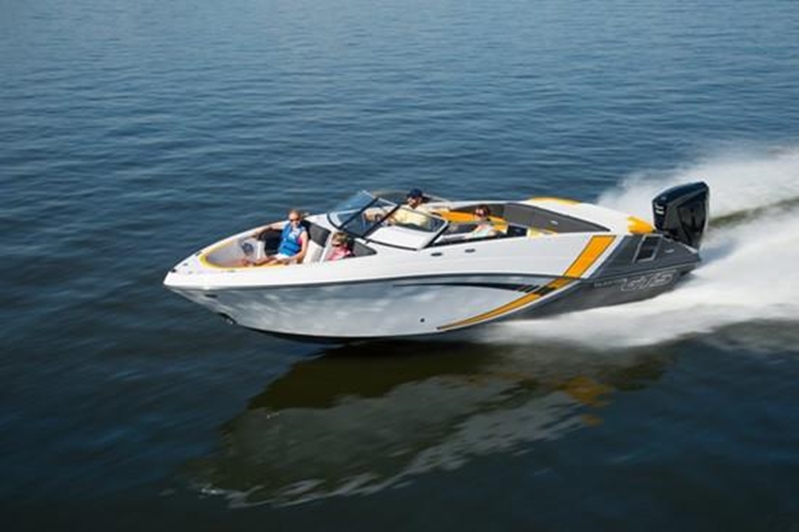
Just as a car's tyres influence how it handles on the road, so too does a boat's hull shape affect the way it handles in the water. Planing hulls, the kind that most of the powerboats found at Hunts Marine possess, come in a variety of shapes. But how do they work? And what are the different kinds?
How does a planing hull work?
To understand how a planing hull works, it's useful to consider first how a displacement hull works. Sitting in the water, boats with displacement hulls shift the water out of the way - hence the name. Examples of boats with displacements hulls are canoes and cruise ships.
Planing hulls, by contrast, function more like a skimming stone - by generating hydrodynamic lift, the hull sifts upon the surface of the water, allowing it to achieve greater speed due to less contact with the water.
This generation of lift is dependent on speed, and this is what's referred to when boaters talk about 'planing speed'. Drive below it, and insufficient lift is generated for the boat to sit atop the water, so it behaves like a displacement hull. An an intermediary speed, the boat will plow through the water, not quite plaining but not displacing water very effectively either.
You want to get out of this plowing stage as quickly as possible, as it's where the boat's engine usually has to work the hardest. As such, it's often best to just give it the business when accelerating, in order to get up on the plane.
What are the two main kinds of planing hull?
Despite there being many different kinds of powerboats, the hull shapes they possess fall along a spectrum, from flat bottom at one end, to deep-V at the other.
1. Flat bottom
Typically found on small fishing boats or dinghies, flat bottom hulls have a shallow draft (distance between the water level and the lowest point of the hull). For this reason, flat bottom hulls are good in shallow waters, but can be punishing in waves.

2. Deep-V
These are the hulls often found on boats at Hunts Marine - like the Glastron GTS 240, for example. The 'V' shape in the hull helps the boat cut through the water like a knife, rather than displacing water or gliding like a flat bottomed hull might. They also handle choppy water better, making them more suitable for open waters.
3. Somewhere in between
Between flat bottom hulls and deep-Vs, there are a range of hulls with less aggressive V angles that have differing performance characteristics.
For more advice on buying a boat with a hull shape that'll fit your needs, get in touch with the crew at Hunts Marine today.




